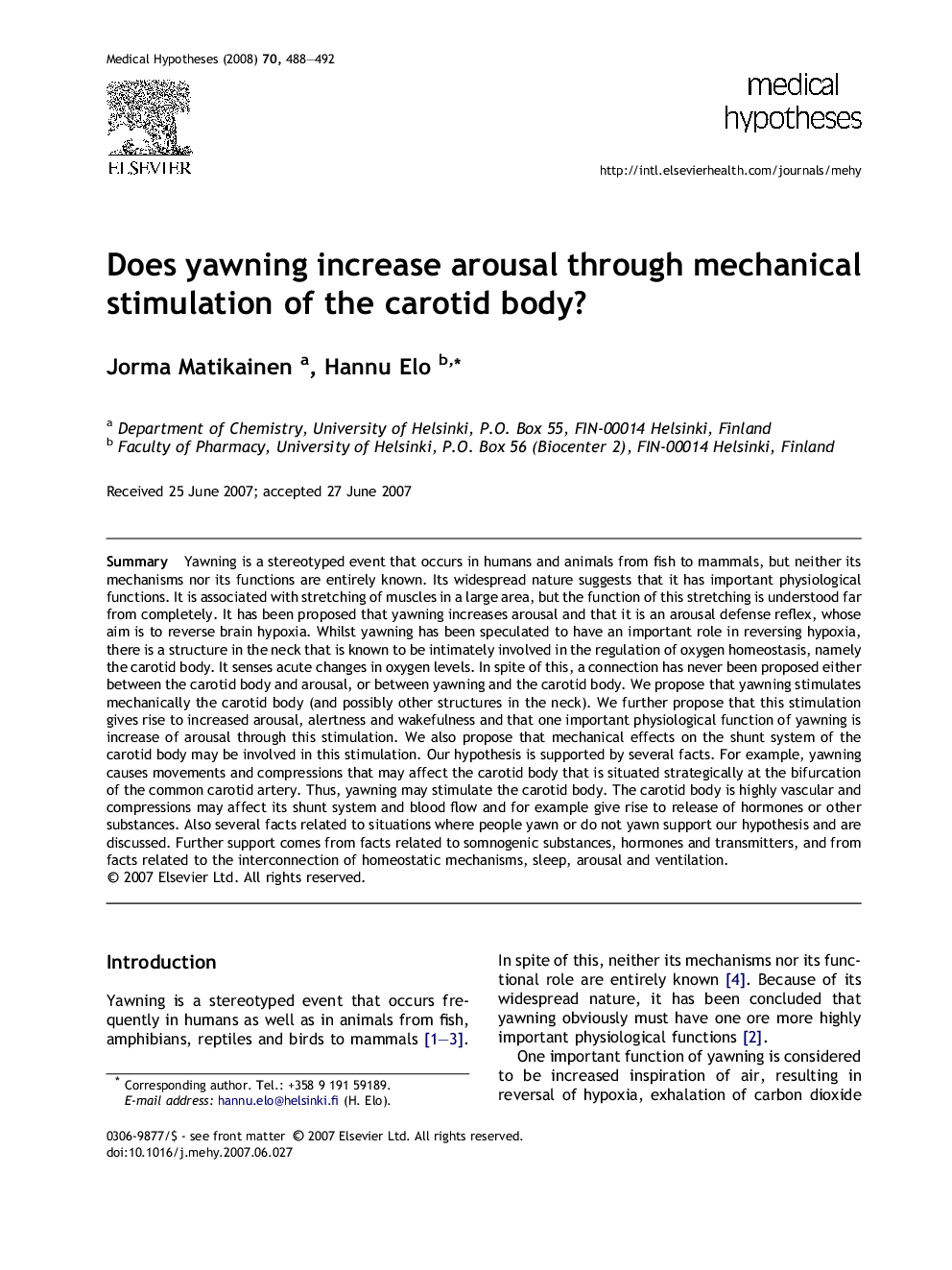| Article ID | Journal | Published Year | Pages | File Type |
|---|---|---|---|---|
| 2491046 | Medical Hypotheses | 2008 | 5 Pages |
SummaryYawning is a stereotyped event that occurs in humans and animals from fish to mammals, but neither its mechanisms nor its functions are entirely known. Its widespread nature suggests that it has important physiological functions. It is associated with stretching of muscles in a large area, but the function of this stretching is understood far from completely. It has been proposed that yawning increases arousal and that it is an arousal defense reflex, whose aim is to reverse brain hypoxia. Whilst yawning has been speculated to have an important role in reversing hypoxia, there is a structure in the neck that is known to be intimately involved in the regulation of oxygen homeostasis, namely the carotid body. It senses acute changes in oxygen levels. In spite of this, a connection has never been proposed either between the carotid body and arousal, or between yawning and the carotid body. We propose that yawning stimulates mechanically the carotid body (and possibly other structures in the neck). We further propose that this stimulation gives rise to increased arousal, alertness and wakefulness and that one important physiological function of yawning is increase of arousal through this stimulation. We also propose that mechanical effects on the shunt system of the carotid body may be involved in this stimulation. Our hypothesis is supported by several facts. For example, yawning causes movements and compressions that may affect the carotid body that is situated strategically at the bifurcation of the common carotid artery. Thus, yawning may stimulate the carotid body. The carotid body is highly vascular and compressions may affect its shunt system and blood flow and for example give rise to release of hormones or other substances. Also several facts related to situations where people yawn or do not yawn support our hypothesis and are discussed. Further support comes from facts related to somnogenic substances, hormones and transmitters, and from facts related to the interconnection of homeostatic mechanisms, sleep, arousal and ventilation.
